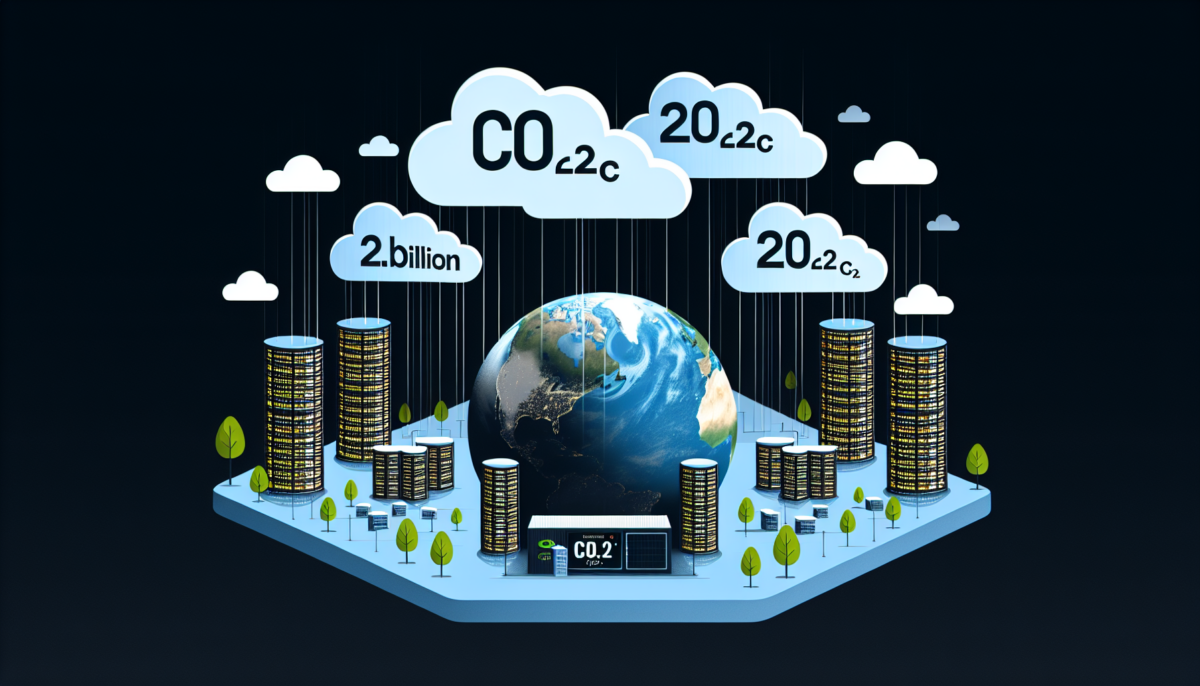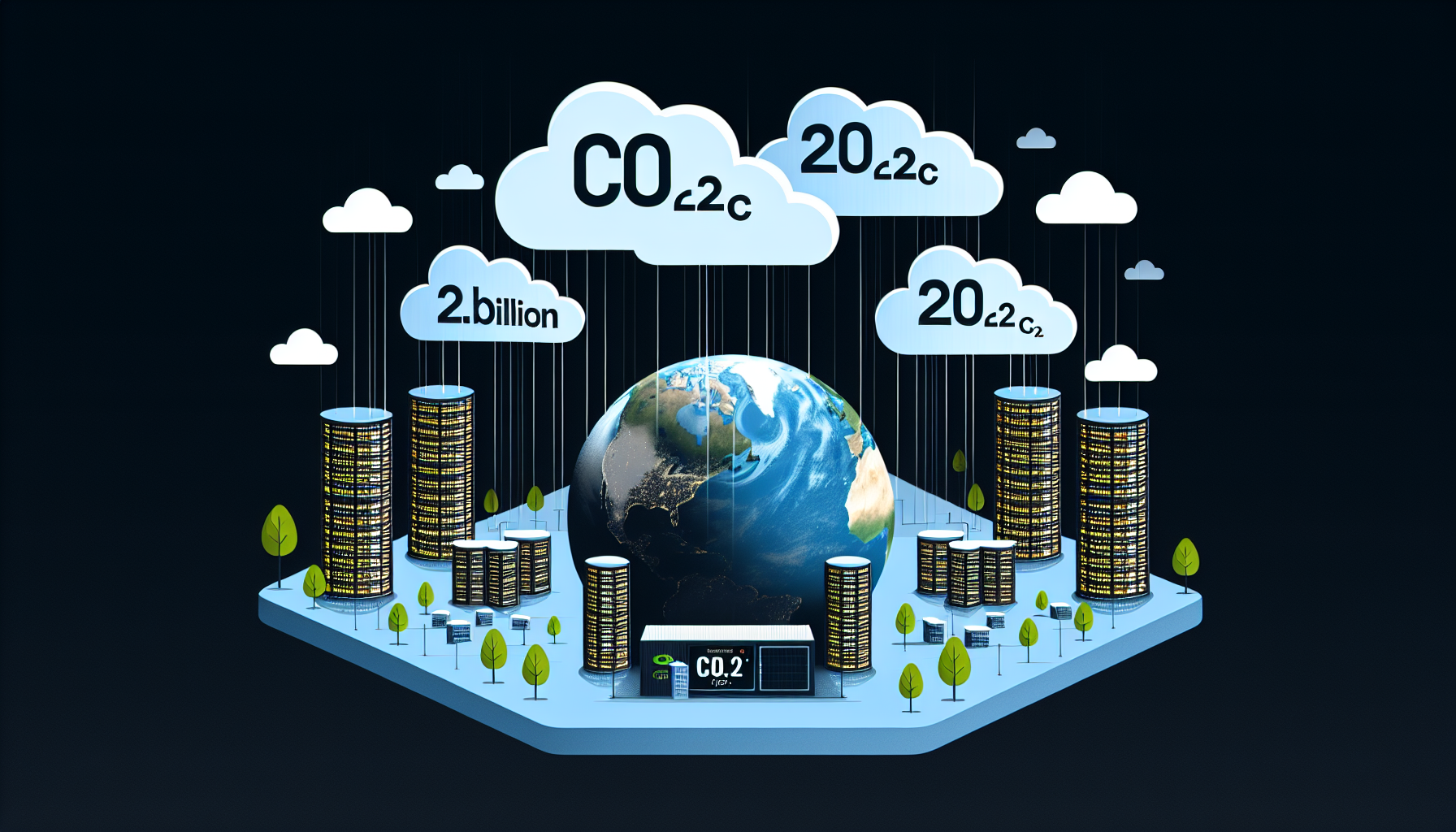Data Centers Expected to Release 2.5 Billion Tonnes of CO2 Worldwide by 2030
We independently review everything we recommend. When you buy through our links, we may earn a commission which is paid directly to our Australia-based writers, editors, and support staff. Thank you for your support!

Quick Read
- By 2030, global data centres are forecasted to generate 2.5 billion tonnes of CO2.
- Leading tech entities such as Google, Microsoft, Meta, and Amazon are fueling this trend, enhancing AI and cloud services.
- These corporations have vowed to significantly reduce their carbon emissions by 2030, despite the increase in their output.
- The rise in emissions is prompting investment in technologies aimed at decarbonisation, including carbon capture and renewable energy.
- If these trends persist, data centre emissions will account for around 40% of the United States’ yearly emissions.
- There is an anticipated rise in the demand for energy-efficient technology and sustainable building materials.
Data Centres Forecasted to Generate 2.5 Billion Tonnes of CO2 by 2030

Globally, data centres are projected to create a concerning 2.5 billion tonnes of CO2 by 2030, largely attributed to the rapid growth of hyperscaler companies like Google, Microsoft, Meta, and Amazon. These tech leaders are enhancing their artificial intelligence (AI) and cloud computing capabilities, resulting in an unprecedented demand for data centres that consume considerable energy. Although they are striving to lower emissions, this expansion illustrates the substantial environmental repercussions of the digital economy.
Hyperscalers Leading Energy Consumption
Hyperscalers are massive enterprises that manage extensive data centres to facilitate AI, cloud computing, and other cutting-edge technologies. Companies such as Google, Microsoft, Meta, and Amazon are pioneers in this growth, striving to address the escalating global need for digital services. Nonetheless, this progress bears a significant environmental cost. Data centres are infamous for their high energy consumption, and the proliferation of these facilities will likely escalate their greenhouse gas emissions.
A report by Morgan Stanley indicates that by the decade’s end, data centre emissions may represent approximately 40% of the total annual emissions from the United States. This situation has raised alarms regarding the sustainability of such infrastructures as the world confronts the pressing necessity to decrease carbon emissions.
Commitments to Reduce Emissions by 2030
In light of the dramatic rise in emissions, prominent tech firms have vowed to drastically diminish their carbon footprints. Google, Microsoft, Amazon, and Meta have all made bold commitments to achieve net-zero emissions by 2030. These pledges are in line with broader international initiatives to tackle climate change. For instance, Google intends to operate entirely on carbon-free energy by 2030, and Microsoft aims to be carbon negative by the same deadline.
Yet, the challenge remains in reconciling the increasing demand for data processing with sustainability objectives. Although these corporations are making headway in adopting renewable energy sources, their rapid data centre expansions necessitate substantial investments in innovative decarbonisation technologies to accomplish their goals.
Funding for Decarbonisation Technologies
In light of the environmental consequences posed by data centres, there is an expected surge in investment directed towards decarbonisation technologies. This encompasses the utilization of energy-efficient devices, the implementation of green building materials, and the broader adoption of renewable energy. Morgan Stanley’s analysis emphasizes that this could lead to a thriving market for solutions intended to mitigate carbon emissions.
A key focus for investment is Carbon Capture, Utilisation, and Sequestration (CCUS) technology, which captures and stores carbon emissions before they can escape into the atmosphere. Moreover, Carbon Dioxide Removal (CDR) techniques, which actively extract CO2 from the environment, are gaining momentum. Both methods are considered essential for assisting tech companies in fulfilling their carbon reduction promises.
Australia’s Position in the Data Centre Growth
Australia is also witnessing a boom in data centre development, with prominent companies increasing their footprint in the nation. The surge in digitalization across industries and the heightened demand for cloud services have positioned Australia as an appealing site for new data centre facilities. Nevertheless, this growth invites the challenge of addressing environmental impacts.
Policymakers and businesses in Australia are currently prioritizing the integration of renewable energy sources and energy-efficient innovations into these facilities. The nation’s ample renewable energy assets, especially solar and wind, offer a favorable outlook for lowering the carbon emissions associated with its data centre sector. However, as global data service demand continues to soar, Australia’s capacity to harmonize growth with sustainability remains crucial.
Conclusion
The swift growth of data centres, propelled by major players like Google, Microsoft, Meta, and Amazon, is on track to yield 2.5 billion tonnes of CO2 by 2030. Although these companies have made noteworthy pledges to mitigate their emissions, the escalating demand for AI and cloud computing contributes to heightened energy consumption. Investments in decarbonisation technologies, including CCUS, CDR, and renewable energy initiatives, are essential to diminish the environmental impact of this burgeoning sector. As Australia positions itself as a significant contributor in the data centre arena, it must emphasize sustainability to limit its carbon footprint.
Questions and Answers
Q: What are hyperscalers, and why are they important?
A:
Hyperscalers are major technology companies operating substantial data centres that support AI, cloud services, and other digital functions. Google, Microsoft, Meta, and Amazon lead this sector. Their importance stems from their capability to efficiently process massive volumes of data, making them vital to the global digital economy. However, their operations also rely on a significant amount of electricity, which greatly contributes to worldwide CO2 emissions.
Q: What is the projected CO2 emission from data centres by 2030?
A:
Data centres are forecasted to emit 2.5 billion tonnes of CO2 globally by 2030. This amount could represent around 40% of the total emissions from the United States in one year, underscoring the environmental effects of the expanding digital economy.
Q: What initiatives are underway to cut data centre emissions?
A:
Major firms such as Google, Microsoft, Meta, and Amazon have vowed to substantially decrease their carbon footprints by 2030. Their initiatives include investments in renewable energy, energy-efficient solutions, and the advancement of decarbonisation technologies like Carbon Capture, Utilisation, and Sequestration (CCUS) and Carbon Dioxide Removal (CDR).
Q: How does Australia fit into the global data centre market?
A:
Australia is becoming an emerging contender in the data centre industry due to its rising demand for cloud services and its rich renewable energy resources. The nation is concentrating on incorporating energy-efficient methodologies and renewable energy into its data centre infrastructure to decrease emissions. However, alongside the rapid industry expansion, handling environmental ramifications is a significant challenge for Australia.
Q: What is Carbon Capture, Utilisation, and Sequestration (CCUS)?
A:
CCUS refers to technology that captures carbon emissions from industrial operations and stores them underground or repurposes them for alternative uses. This approach is vital in helping industries, including data centres, reduce their carbon footprint and achieve their sustainability targets.
Q: Is renewable energy alone enough to resolve the data centre emissions dilemma?
A:
While renewable energy plays a critical role in addressing this issue, it may not single-handedly suffice. Data centres require a constant and reliable power supply, which can prove challenging with intermittent renewable sources such as solar and wind. Thus, a synergistic approach combining renewable energy, energy-efficient technologies, and decarbonisation solutions like CCUS and CDR will be necessary for effectively tackling the emissions challenge.
